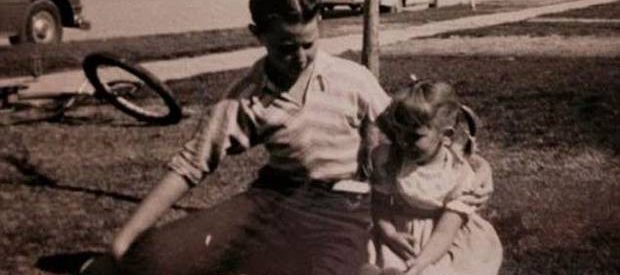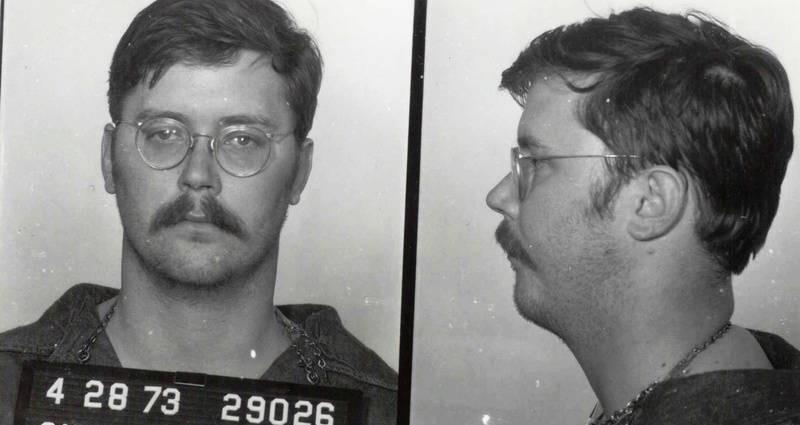 Source: All That?s Interesting
Source: All That?s Interesting
If you didn?t know about the evil lurking within Edmund Kemper, you would probably view him as a disarming gentle giant. Though Kember stands at 6’9″, most of the people who knew him prior to his crimes considered him to be kind, intelligent, conversational, and remarkably normal.
But deep within Kemper lay a violent woman-hater. The same friendly bargoer who often spent his free time chatting with local police officers over a few beers was a brutal murderer who took great pleasure in inflicting fear and pain in others and defiling their bodies.
A Much-Less-Than-Ideal Start in Life
Most people who grow up in a bad environment don?t grow up to be serial killers, but sometimes it?s not that difficult to understand how someone grew up to be so disturbed.
Edmund Kemper was born on December 18, 1948, in Burbank, California, to Edmund Emil Kemper II and Clarnell Elizabeth Kemper. His parents had an arranged marriage devoid of love and mutual respect.[1] [4]
Kemper II, a World War II veteran who had worked on nuclear bomb tests in the Pacific, once said of his wife that ?suicide missions in wartime and later atomic bomb testings were nothing compared to living with Clarnell.? [4]
Clarnell often made fun of her husband?s ?menial? job and refused to show her son any real love and affection for fear she would ?turn him gay.?[1]
In 1957, Kemper?s parents divorced and Ed went to live with his mother and two sisters in Montana.
 Ed with his sister Allyn ? Source: New Zealand Herald
Ed with his sister Allyn ? Source: New Zealand Herald
Ed?s mom was an alcoholic with some strange paranoias. At the age of 10, Ed?s mom made him start sleeping in the basement because she feared he would rape his sisters.
His mom was emotionally and psychologically abusive, frequently picking on young Ed for his size and his ?weirdo? personality. She often told him that no woman would ever love him. [2]
 Ed?s mother, Clarnell ? Source: Edmund Kemper Stories
Ed?s mother, Clarnell ? Source: Edmund Kemper Stories
From an early age, Ed fantasized about killing his mother. [1] He enjoyed cutting the heads off of his sisters? dolls and regularly drew them into playing a game of ?gas chamber? or ?electric chair.? He would make his sisters blindfold him and tie him to a chair, at which point he would pretend to writhe in agony until he ?died.?
No neighborhood cat was safe around Ed Kemper. At 10, he burned one alive. At 13, he slaughtered one with a knife. His dark fantasies and animal abuse were early signs that he was morphing into a heinous killer, but no one took noticed and no one intervened.
 Ed?s sisters, Susan (L) and Allyn ? Source: New Zealand Herald
Ed?s sisters, Susan (L) and Allyn ? Source: New Zealand Herald
Ed even stalked his second-grade teacher?s house, horrifying her by carrying his father?s bayonet. [4]
Eventually, Ed went to live with his father, but his father outright rejected him, so the reunion was short-lived, and he soon returned to his mother?s home. He was given the message that he was unwanted, unloved, and defective yet again when, as a teenager, his mother sent him to live with his grandparents. [1] [3]
In the care of his grandparents, Ed?s violent fantasy life continued to expand. For the first time in his life, someone tried to tame the young man?s sick desires. [1] After killing several birds and other small animals, his grandparents took away his gun, which infuriated Ed.
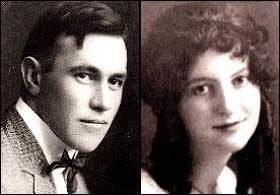 Ed?s grandparents, Edmund Emil Kemper and Maude Matilda Hughey Kemper ? Source: All That?s Interesting
Ed?s grandparents, Edmund Emil Kemper and Maude Matilda Hughey Kemper ? Source: All That?s Interesting
At age 15, in 1964, Ed reclaimed his gun and shot his grandmother, whom he accused of being just as abusive as his mother, in the back following an argument. Ed didn?t want his grandfather to have to suffer the loss and live without his beloved wife, so Ed waited for him to come home and then shot him, too, and hid his body. He would later admit he killed his grandmother just to see what it felt like to kill someone, however. [1] [3]
Following the slayings, Ed called his mom and told her what he?d done, and she directed him to call the police and confess to his crimes. [1] He did so and was promptly placed in the custody of the California Youth Authority, where he underwent a series of psychological tests. While Ed?s IQ was nearly genius-level, he was diagnosed with paranoid schizophrenia. He was sent to Atascadero State Hospital, a maximum-security facility for mentally ill inmates.
Released Back Into Society
The Killing Spree Begins
 Source: Oxygen.com
Source: Oxygen.com
In 1969, Ed Kemper once again set foot in public after five years of incarceration. [4] There had been nothing ?corrective? about the time he spent at Atascadero State Hospital, and his demons came out in earnest when he was released into the care of his mother, the person who enraged him the most. He was 21, and he was about to become the infamous Co-ed Killer.
As part of his release, Ed was required to check in with probation psychologists, but he was a smart cookie who knew how to convince them that he was of no risk to others.
Ed?s time at Atascadero only twisted his mind even more. [5] He was, after all, spending time in the company of other violent offenders who taught him how to perfect his craft. Their behavior seemed normal in such an environment. Ed claimed to have a religious conversion while in the hospital, but would not take responsibility for his crimes, saying they were beyond his control.
When he had the money, Ed supported himself by living in various locations across Northern California. [4] When his cash flow ran dry, he would return to his mother?s house.
The unsettling reality of being a woman is that you always have to look over your shoulder. It?s a shame that women can?t go about their lives without having to worry about being abducted or worse, but it has always been that way.
Mary Ann Pesce and Anita Luchessa, both Fresno State students, were minding their own business and pursuing their education when Ed Kemper decided they didn?t have the right to live. He encountered them while driving around the Berkeley area. He brought the women to a wooded area nearby with a plan to rape them, but he got cold feet and stabbed and choked the women to death, instead.
 Mary Ann Pesce (L) and Anita Luchessa ? Source: AnswersAfrica.com
Mary Ann Pesce (L) and Anita Luchessa ? Source: AnswersAfrica.com
He loaded the women?s bodies into his trunk and drove to his home in Alameda. He was so unbothered by what he had done that when a police officer stopped him for a broken taillight, the officer wasn?t the least bit suspicious and didn?t check Ed?s trunk. Ed had mastered the art of playing it cool.
Feeling safe at home, Ed raped the women?s corpses, dismembered them, placed the body parts in plastic bags, and tossed them into a ravine near Loma Prieta Mountain.
Ed?s encounter with the police and his successful disposal of Mary Ann and Anita?s bodies filled him with a macabre sense of confidence and he quickly got to work on hunting and attacking his next victim. This time, Ed zeroed in on a Korean dance student named Aiko Koo, 15.
 Source: Edmund Kemper Stories
Source: Edmund Kemper Stories
Aiko and Ed?s paths crossed when Aiko decided to hitchhike to her dance lesson instead of waiting for the bus. [5] It didn?t take long for Aiko to catch onto Ed?s evil plan and she panicked. But Ed was such an expert manipulator that he convinced Aiko that he was planning to use the gun in his car on himself, not her. At one point, Ed locked himself out of the car and actually convinced Aiko to let him back in. It would be the worst ? and last ? mistake of her life.
Ed drove Aiko to the mountains and pulled his car off to the side of the road in a remote area. He taped her mouth shut and attempted to suffocate her by placing his thumbs in her nostrils. She briefly lost consciousness but soon awoke. This time, Edmund suffocated her until she stopped breathing completely.
Ed placed her on the ground, raped her, then strangled her with a scarf. Satisfied that Aiko was finally dead, he put her body in the trunk and drove to a local bar where he had a few beers and later went to his mother?s house.
 Aiko Koo ? Source: New Zealand Herald
Aiko Koo ? Source: New Zealand Herald
Throughout the evening, Ed returned to his car to open the trunk and stare at his handiwork, getting a sick rush each time. He eventually carried Aiko?s corpse into his apartment, laid her on his bed, and dissected her. He disposed of her head and hands in two separate locations to prevent identification and very few of her remains were ever found. Law enforcement didn?t initially tie Aiko?s death to those of Mary Ann and Anita.
The Spree Continues
For four months, Edmund Kemper kept his sickening urges in check, but his twisted urges soon overwhelmed him.
In January 1973, Ed purchased a .22 caliber automatic pistol in defiance of an order not to own any firearms due to the murder of his grandparents. He feared the police would find out that he had purchased a gun and would finally catch up with him, but he had no difficulty obtaining the weapon.
Ed?s next victim was hitchhiker Cindy Schall. [6] The 18-year-old was studying at Cabrillo College to become either a teacher or a police officer.
 Cindy Schall ? Source: AnswersAfrica
Cindy Schall ? Source: AnswersAfrica
He picked up the young woman, forced her into the trunk, and shot her in the head. [7] He went back to his mother?s house, where he was living at the time, with the student?s body in his vehicle, and had sex with it before cutting it into pieces and burying her head in his mother?s garden, right below his bedroom window.
 The home of Ed Kemper?s mother, Clarnell
The home of Ed Kemper?s mother, Clarnell
Cindy?s head was buried facing the house so that Ed could fantasize that she was looking up at him. [8]
He would later explain:
?I talked to her, saying loving things, the way you do to a girlfriend or wife.?
Ed?s confidence was increasing, but so was his concern that the police would eventually tie him to the murders of four co-eds. [5] This time, he dismembered his latest kill in the bathtub, which allowed him to wash away any evidence of how he?d defiled the body, removed the bullet from Cindy?s skull, packaged the other body parts in plastic bags, and tossed them off a cliff.
To Ed?s horror, Cindy?s remains were discovered within 24 hours, but once again he escaped without garnering any suspicion.
Free and Clear Once and for All
Ed hated women, and it didn?t matter who they were. He didn?t know the co-eds he killed personally. They were merely an extension of his mother, the ultimate ball-busting female. And while Ed enjoyed killing, defiling, and dismembering his victims, he was also disgusted with himself and realized the murders needed to stop.
In his warped mind, the only way the murders could end was if he killed his mother. She was, after all, the person who made him despise women to intensely.
On Easter weekend 1973, Ed and Clarnell had a doozy of an argument. [5] Ed stormed out of the house and drove to the University of California Santa Cruz campus. [7] There, he met Rosalind Thorpe, 23, and Allison Liu, 20. He easily lured them into his car with the help of a UCSC sticker that he had received from his mother, who worked for the school.
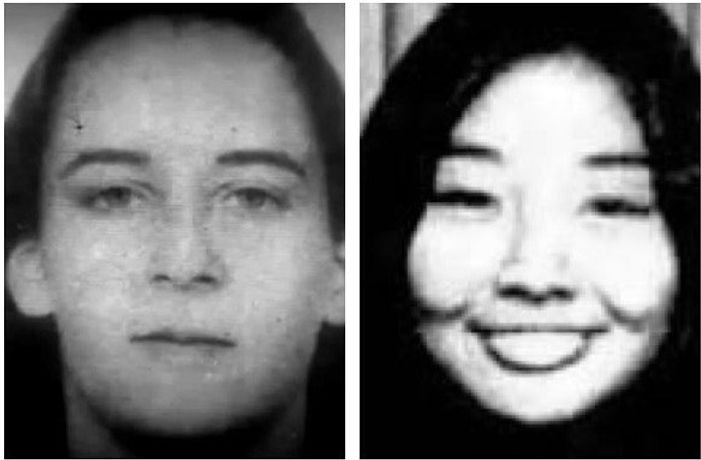 Rosalind Thorpe (L) and Allison Liu ? Source: Vampire Squid
Rosalind Thorpe (L) and Allison Liu ? Source: Vampire Squid
When the two women got in his vehicle, he immediately shot them and wrapped their bodies in blankets and loaded them into the trunk.
When he returned to his mother?s home, he beheaded Rosalind and Allison. The next morning, Ed raped Alice?s headless body in his bedroom. He removed the bullet from Rosalind?s head. Then, he drove away from the Santa Cruz area to dispose of the bodies and headed towards Pacifica to get rid of the women?s heads and hands.
Later in the night, Edmund sat on his bed debating whether or not to kill his mother, and if he were to do so, how. [5] Clarnell slept peacefully in her room, unaware that her son was perfecting his plan to slaughter what he considered to be the ultimate prey.
Clarnell was the one who made Ed hate himself. She was the one who made him hate women. Now he was an aberration, a monster. He would never be a normal person again, not that he ever was. He would never be ?safe? to walk the earth. It was all Clarnell?s fault, Ed told himself, and she needed to die.
At 5:15 a.m. on Saturday, Ed went to the kitchen and grabbed a hammer. He crept to Clarnell?s bedroom, weapon in hand, and struck her once, hard, then slashed the woman?s throat. It took him but a minute to decapitate her and remove her vocal cords, which he attempted to put down the garbage disposal.
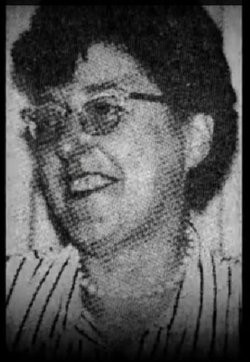 Ed?s mom, Clarnell ? Source: FindAGrave.com
Ed?s mom, Clarnell ? Source: FindAGrave.com
The nauseating move was symbolic to Ed. Throughout his life, his mother?s nagging, haranguing voice rang in his ears, telling him how weird and worthless he was. Now she would never insult him again.
When the garbage disposal spat his mother?s vocal cords back into the sink, Ed wasn?t surprised. Even in death, Clarnell was mocking him.
For the next few days, Ed played with his mother?s remains. He raped her severed head, placed it on the mantle, and used it as a dartboard. [4]
He hid his mother?s body in a closet, cleaned up the scene as well as he could, then left the house. [5]
As Ed drove around, it occurred to him that the police might be less likely to eye him for his mother?s murder if another victim was found in the house. When he returned home, he phoned his mother?s friend, Sara Hallett, to invite her to Easter dinner.
 Source: BirthFactDeathCalendar.net
Source: BirthFactDeathCalendar.net
It wasn?t until close to 5 p.m. on Saturday when Sara returned Ed?s phone call and accepted his invitation to dinner. Ed had spent the whole day worrying that his plan might fail, but it seemed he would be able to escape the long arm of the law yet again. He lured Sara to the home by telling her the dinner was a surprise for Clarnell.
When Sara arrived, Ed first strangled her with his hands, then with the scarf he had stolen from Aiko. Later in the evening, he undressed Sara and had sex with her body on his bed.
On Easter Sunday, Ed hopped into Sara?s car and drove east, but his paranoia was becoming overwhelming. He decided to rent another car and drop Sara?s car off at a gas station, telling the clerk it needed repairs.
Ed drove for 18 hours, only stopping to purchase gas, sodas, and No-Doz pills. When he was stopped by the police in Colorado for speeding, Ed was able to keep his cool composure and the cops didn?t suspect a thing.
He eventually stopped in Pueblo and decided it was time to confess his crimes. His paranoia had won. He called the police from a payphone and told them what he had done. [9] At first, the police thought it was a prank call, but Ed assured them it was not. This was ?Big Eddie,? after all ? the same guy who shared beers and chit-chat with the police at the local bar. But he convinced them that he was telling the truth and politely waited to be arrested. Once in cuffs, he eagerly confessed to his many crimes.
 Ed smokes a cigarette with a police officer after appearing in Pueblo District court for an extradition hearing ? Source: A&E
Ed smokes a cigarette with a police officer after appearing in Pueblo District court for an extradition hearing ? Source: A&E
Ed told the police he was ?terrified of violence? and begged for the death penalty.
Later, he would state that he had gotten to the root of his problem when he killed his mother, and he no longer needed to take his rage out on innocent victims.
As time went by, however, Ed would admit that the urge to kill was still there.
A Hunger for Revenge?And More
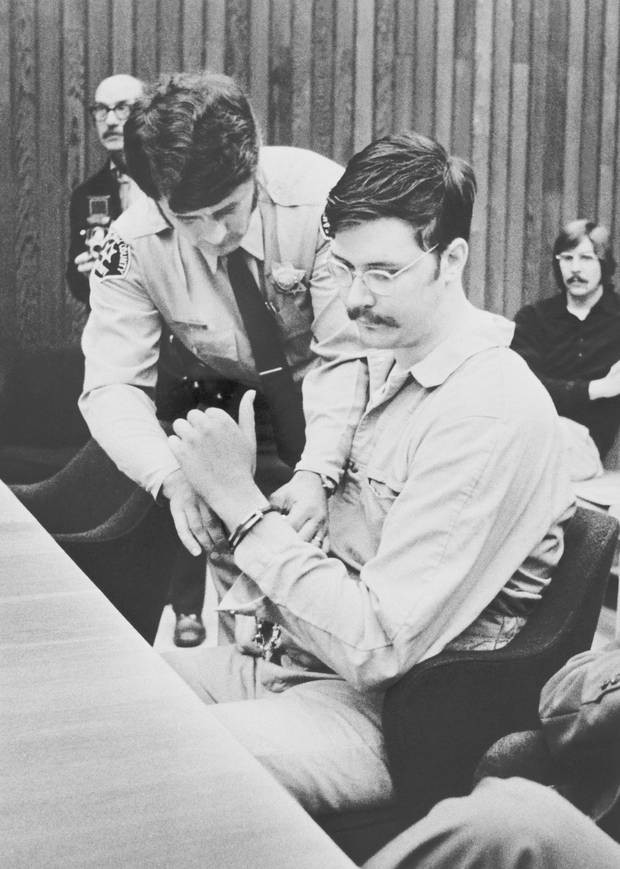 Ed Kemper in court ? Source: New Zealand Herald
Ed Kemper in court ? Source: New Zealand Herald
When Ed was arrested, he gleefully shared the gory details of his crimes. [5] His own public defender, James Jackson, was so startled by his tales that the only defense he could muster for his client was insanity.
Prosecution witness Dr. Joel Fort immediately went to work chipping away at the insanity defense. He studied Ed?s case, going as far back as the murder of his grandparents. This was no paranoid schizophrenic, Fort said. Ed was obsessed with sex and violence and craved attention, but he wasn?t crazy.
Ed?s trial spanned three weeks and not a single, solitary soul ? not even his sisters or the doctors from Atascadero ? were able to convince the jury that Ed was insane. He was simply?evil. And it only took jurors five hours to convict Ed of 10 counts of first-degree murder. He was sentenced to eight life sentences. He did not get the death penalty he had begged for.
The Psychology of Ed Kemper
Capable of Making the Right Choices
 Source: Shared.com
Source: Shared.com
Ed?s childhood experiences certainly helped to shape the monster he became. He was always unwanted by the people who should have loved and cared for him the most. He was tall and awkward, standing at 6’4″ by the time he was 15. People were intimidated by Ed, and they mostly shunned him and left him feeling isolated and increasingly frustrated.
The reason Ed Kemper became such a demented rapist and killer was that he was brimming with hate. Even as a child, he hated the human race, once commenting that he wished everyone else in the world would die and that he would like to kill all of them himself.
Ed was eventually diagnosed with anti-social personality disorder, which can make an affected individual narcissistic and socially anxious. [10] This disorder often occurs in those who grew up in an environment of emotional neglect and a lack of love.
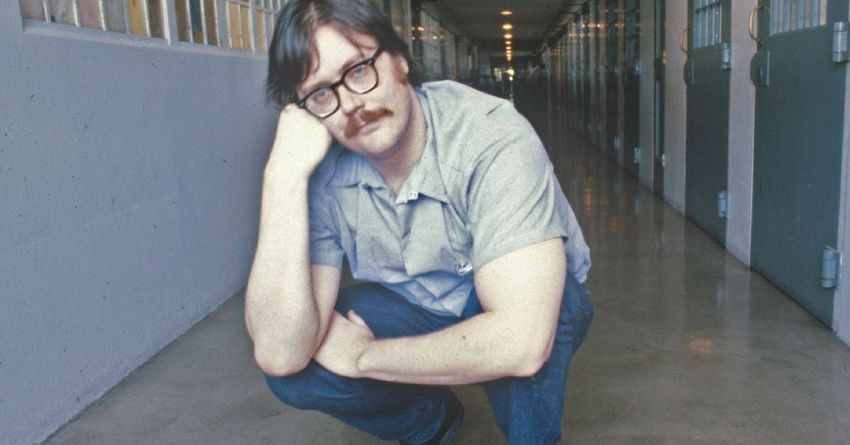 Source: Shared.com
Source: Shared.com
Ed wanted to love his mother, but he simply couldn?t. Clarnell hated men and when Ed was born, she transferred that hatred to her only son. She assumed that he would grow up to be as terrible as the other men in her life and treated him as such. The more he tried to win his mother?s love and approval, the more she withheld those things from him.
Unlike most people with anti-social personality disorder, Ed was remarkably self-aware. He knew he ?wasn?t right,? and he understood why he was the way he was.
This self-awareness, along with his high intelligence, meant he knew the difference between right and wrong, his doctors had concluded. He may not have been able to control the way he felt or the way he viewed the world, but he was capable of making choices. Time and time again, he chose wrongly. He didn?t care that what he was doing was wrong?but he often tried to manipulate others into thinking he had real empathy in a bid to gain sympathy.
Criminal psychologist Adrienne Arno, who previously worked with Lifetime Network and IDTV and holds degrees from Plattsburgh State University and Fordham University, analyzed one of Ed?s first interviews after he was arrested for the co-ed murders. She had this to say:
??When he said ?I just went through a horrible experience?? (referring to how he had to stab Pesce while Luchessa was tied up in his car) and ?was in shock because of that?? [that?s] classic Narcissism. [He] made an active, planned choice to stab a teenage girl to death and was so traumatized by it. Really?? This comment strikes me as another very well concealed attempt to manipulate the listener ? a low-key call for sympathy? Then he justifies his murder of Luchessa by telling himself ?I have to do this?? (aka. I don?t have a choice) ?She?s going to tell on me?? (justifying WHY he doesn?t have a choice)? but he DID have a choice ? a lot of them between even the first time he picked up the roommates (Pesce & Luchessa) in his car and the murders? So this whole ?I didn?t have a choice? is another way to justify knowing it?s wrong and doing it anyway.?
He Loved the Attention
 Source: IMDb.com
Source: IMDb.com
During interviews, Ed said that if the women he picked up in his car discussed the murders with him, they got a ?free ride.? In other words, he let them live. It seems that Ed took great pleasure in discussing his crimes and was proud of what he had done.
Arno explained:
?The only vulnerable person in that car was the woman who took the ride. And he knew it. But there?s a sense of power in letting someone live when you know you could kill them just as much as there?s power in killing. So if the ?lovely? lady in his car was able to feed into his ego and make him keep important (unknowingly) by talking about the murders, that was enough of an ego boost to warrant letting her live.?
He added:
?This seems to me more like he appreciated the fame his killings brought him. There?s a twisted kind of pride in his voice when he speaks about his crimes, it?s low-key but it?s there, which isn?t entirely unheard of in an antisocial personality.?
Arno went on to explain that killing provided Ed with the things he desired most but never received under normal circumstances: recognition and power.
He Believed He Was Normal
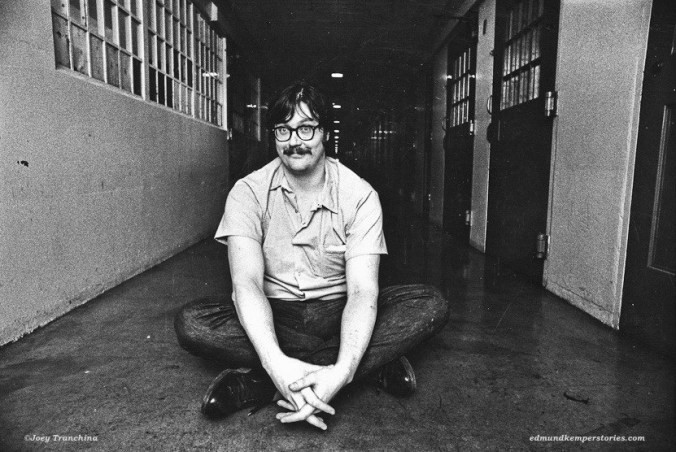 Source: Edmund Kemper Stories
Source: Edmund Kemper Stories
What is normal, really? There is no litmus test for normalcy. Yet, most of us recognize things that are highly abnormal. Killing people is abnormal. Killing your family members, in particular, is abnormal. Decapitating your mom, using her head as a dartboard, and raping it? Well, I hope we all agree that that is abnormal.
But Edmund Kemper very much wanted to pass himself off as a regular guy who just had some problems. Since that was not the case, however, he had to rely on his expert manipulation skills. He repeatedly described himself as normal and trusting.
Said Arno:
?What I hear him saying here is: Look at what an incredible liar I am. I?m so good at what I do I fooled everyone. Classic narcissist.
Kemper?s interaction with the police was much like his interactions with mental health authorities ? it helped him sustain the ?high? he experienced during the crime(s). It?s a power trip to be so close to the investigation, it?s exciting to know something he?s done is getting so much attention, not to mention how much useful information sociopath?s like Kemper can gather to help them continue to elude capture.?
Ed Blamed His Mother?s Murder ? on His Mother
 Source: Bizarrepedia.com
Source: Bizarrepedia.com
Clarnell had no earthly clue what her son was up to. Had she known, it?s anybody?s guess what she would have done, but it?s unlikely she would have kept it quiet.
Ed worked very hard at keeping his stomach-churning hobbies a secret, yet he seemed to indicate that, because he had been planning to kill her for a week before he carried out the plot, she should have known it was coming.
He says: ?I knew a week before I was going to kill her ? ? then shakes head quickly leading into the rest of the sentence which is ?she went out to a party, got sauced?? To me, the timing and the place of where the head shake comes in the sentence seems (we don?t see Kemper finish the sentence unfortunately ) to be communicating specifically: I knew I realized SHE had to die and she went out and got drunk anyway. She should?ve known better, she made me do it.? As if his mother was able to read his mind and knew she was in more danger that week if she wasn?t on her best behavior. Again, this is my suspicion based on what I?m hearing and seeing, but not what the evidence clearly indicates.
?We see a slight head NOD (indicating ?yes? or truth) and then we see that obvious and strong start of the head SHAKE ?no.? This isn?t anything conclusive, but what it suggests to me, based on my experience, is conflict. He tells us he knew he had to kill his mother, but he was conflicted (is it yes or is it no? should I nod or should I shake?) and still feels conflicted internally about his revelation. To me, with the interrupted footage we have of this moment, I?d begin to wonder if at the time he honestly felt confident in his decision to finally kill his mother. Because some of his body language is indicating he didn?t.?
However, Arno notes that in his interviews, Ed expressed what appeared to be true emotion when speaking about his mother, once again pointing to his desire but inability to love her.
Ed Helps the FBI
 Source: Bizarrepedia.com
Source: Bizarrepedia.com
Since Ed enjoyed talking about his crimes and his deranged fantasy life, when famed FBI profilers John Douglas and Bob Ressler asked to interview him, Ed was more than happy to oblige. Regardless of his motives, his insight became invaluable to the agency.
John Douglas is one of the pioneers of modern criminal investigative analysis, having conducted the first organized study in the U.S. of what makes violent criminals ?tick? ? their motives and methods. [11]
Bob Ressler played a major role in developing psychological profiles of violent offenders in the 1970s and is credited with coining the term ?serial killer.? [12]
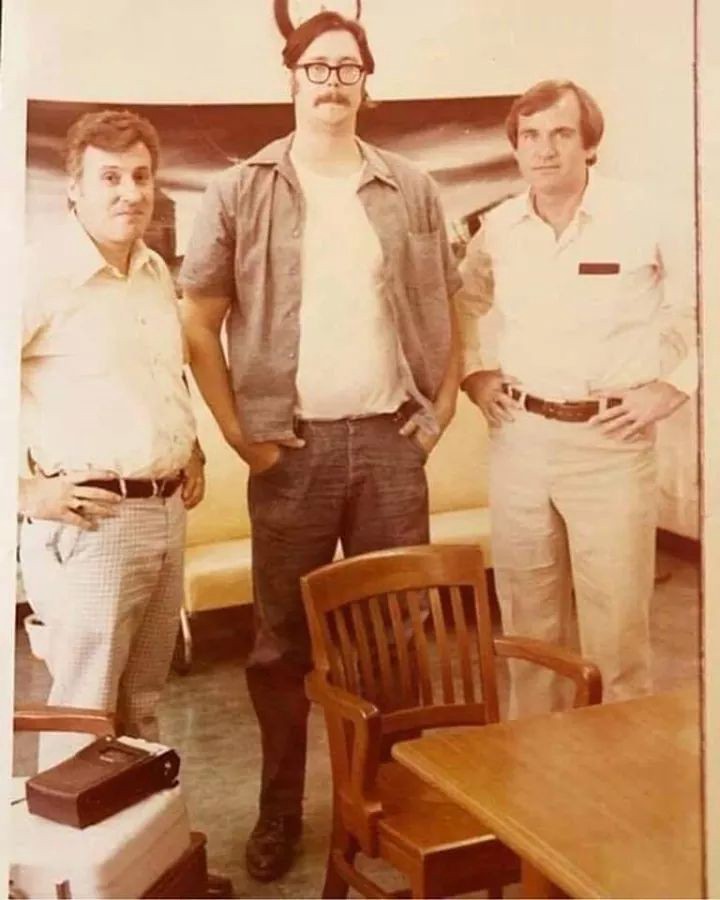 Bob Ressler (L), Edmund Kemper, and John Douglas (R) ? Source: Reddit
Bob Ressler (L), Edmund Kemper, and John Douglas (R) ? Source: Reddit
Douglas said of his time with Ed:
?His attitude was neither cocky and arrogant nor remorseful and contrite. Rather, he was cool and soft-spoken, analytical, and somewhat removed. In fact, as the interview went on, it was often difficult to break in and ask a question. The only times he got weepy was in recalling his treatment at the hands of his mother.?
Ed is only one of the infamous killers interviewed by John Douglas and Bob Ressler. John Wayne Gacy and Jeffrey Dahmer are just a couple of other notable serial killers the pair interviewed.
The popular Netflix show ?Mindhunter? is based on the work of John Douglas and Bob Ressler.
Edmund Kemper Today
 Source: Grunge.com
Source: Grunge.com
Edmund Kemper is currently serving eight life sentences at California Medical Facility in Vacaville. [11] The imposing prisoner has reportedly given up on life. He is confined to a wheelchair and no longer takes visitors and no longer bathes himself, according to John Douglas, who admitted he found Kemper to be a very likable individual.
Between 1977 and 1987, Ed spent 5,000 hours in a recording booth narrating books for the visually impaired. [13] He narrated several hundred books, including Flowers in the Attic.
Ed lives in solitary confinement, where he is allowed an hour of recreation a day and three showers a week.
 Source: DailyRepublic.coms
Source: DailyRepublic.coms
Ed is a noxious mixture of nature and nurture, as damaged as he is dangerous. It?s hard not to sympathize with the younger version of Ed Kemper, but there is no doubt that he should never be released.
Until recently, at least, Ed had always expressed that he was happier in prison than he ever was as a free man. The world, too, is happier with him there.
 Source: Bizarrepedia.com
Source: Bizarrepedia.com
Sources:
- Biography.com
- Crime and Investigation
- Oxygen.com
- All That?s Interesting
- Murderpedia
- Edmund Kemper Stories
- Metro
- Thought Catalog
- Psychology Today
- Ranker
- Vanity Fair
- Edmund Kemper Stories
- True Crime Magazine
